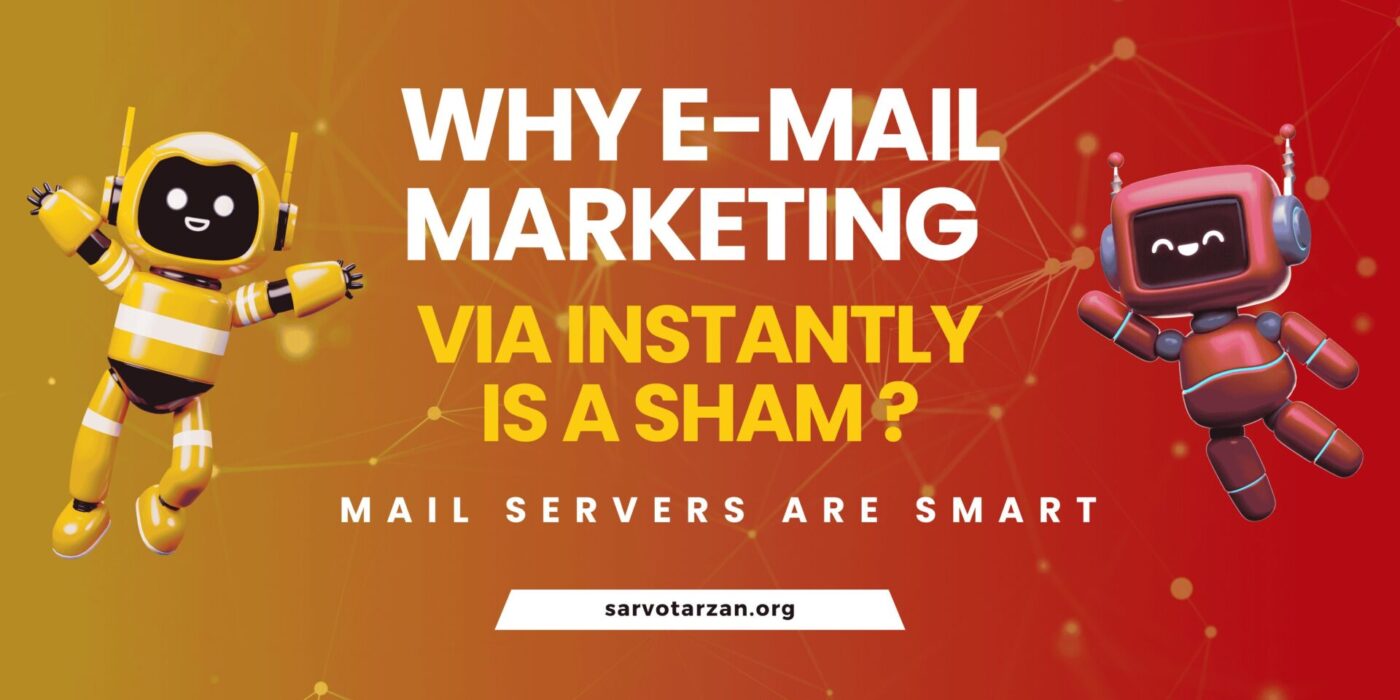E-mail Marketing
Why Setting Up Multiple Gmail Workspace Accounts for Email Marketing via Instantly is a Sham?
Email marketing is a powerful tool that many businesses use to drive sales, grow their audience, and maintain communication with customers. However, not all strategies are created equal. In recent years, a trend has emerged where marketers use multiple Gmail Workspace accounts in tandem with platforms like Instantly to send out bulk emails. This approach promises to increase deliverability, avoid spam filters, and appear more “organic.” But behind this flashy promise lies a reality that is far less appealing, and often, downright deceptive. Setting up multiple Gmail Workspace accounts for email marketing through Instantly is not only ineffective in the long run, but it can also jeopardize your brand’s reputation, lead to compliance issues, and create an unsustainable marketing model.
Here’s a deep dive into why this strategy is fundamentally flawed and why businesses should avoid it.
1. The Myth of Deliverability
One of the main selling points of using multiple Gmail Workspace accounts for email marketing is the belief that it will increase deliverability rates. The idea is that by spreading your emails across different accounts, you can evade spam filters and inbox placement issues. At first glance, this might seem logical. After all, sending large volumes of emails from a single account could raise red flags with email service providers, causing your messages to land in spam folders.
However, this tactic misses the mark for several reasons:
- Gmail’s Smart Filtering Algorithms: Gmail and other email providers are increasingly using AI-driven algorithms to detect spammy behavior. They don’t just analyze the volume of emails coming from one account; they also look at other factors like engagement rates, sender reputation, and content. Even if you’re using multiple accounts, Gmail will eventually catch on if you’re sending low-quality or irrelevant emails. Once your domain or IP is flagged, it becomes incredibly difficult to recover, regardless of how many accounts you create.
- Temporary Fix, Permanent Problem: Using multiple accounts might work temporarily, but email providers will still recognize patterns over time. Once they detect that a particular business is associated with numerous accounts sending similar emails, they can flag the entire domain or IP address as suspicious. This leads to even worse deliverability in the long term. So, while you may see short-term gains, you’re setting yourself up for failure in the future.
2. Damage to Brand Reputation
Brand reputation is everything in the world of email marketing. Every time a recipient sees your email in their inbox, it’s an opportunity to build trust. But when businesses use multiple Gmail Workspace accounts, they risk severely damaging this trust.
- Inconsistent Sender Information: When you send emails from different Gmail Workspace accounts, recipients may notice inconsistencies in the sender information. The “from” addresses may vary slightly, and this can confuse or concern potential customers. A lack of consistency creates a sense of disorganization and unprofessionalism, leading recipients to question the legitimacy of your business.
- Increased Risk of Being Marked as Spam: Recipients who receive emails from several different addresses associated with the same company are more likely to mark them as spam. And every time your email is flagged as spam, it sends a signal to email providers that your content isn’t relevant or wanted. Even if you’re using multiple accounts, this feedback loop affects your entire operation and will eventually hurt all of your email marketing efforts.
3. Compliance Issues and Legal Risks
Email marketing isn’t just about sending emails and hoping for the best; there are laws and regulations in place that govern how businesses can communicate with their customers. Two major regulations include the CAN-SPAM Act in the United States and the GDPR in Europe. When using multiple Gmail Workspace accounts, businesses often skirt dangerously close to non-compliance, which can lead to serious legal consequences.
- Lack of Proper Consent: One common issue with mass emailing via multiple accounts is the lack of explicit consent. Marketers may use purchased email lists or scrape data from the web, then distribute the emails across several accounts to avoid detection. This practice violates both CAN-SPAM and GDPR regulations, which require that businesses obtain explicit consent before sending marketing emails. If caught, companies can face hefty fines, lawsuits, or worse, being blacklisted from major email providers.
- No Clear Opt-Out Mechanism: Another key requirement of email marketing laws is providing a clear and easy way for recipients to opt out of future communications. With multiple accounts, ensuring compliance becomes more difficult. If a user unsubscribes from emails sent from one account, but you continue sending messages from another, you’re technically violating their request to opt out. This not only increases the likelihood of legal repercussions but also damages your relationship with your audience.
4. Operational Complexity and Cost
Running multiple Gmail Workspace accounts may sound easy in theory, but in practice, it becomes a logistical nightmare. For starters, managing dozens of email accounts can be time-consuming, inefficient, and prone to errors.
- Overhead Costs: Each Gmail Workspace account comes with a cost. While the individual cost of one account might not seem significant, the total adds up quickly when you’re running multiple accounts for your email campaigns. The cost is not just financial, but also operational. You’ll need to dedicate time and resources to managing, monitoring, and maintaining these accounts, which can divert focus from other critical areas of your business.
- Increased Risk of Human Error: With multiple accounts, there’s a higher risk of mistakes. Emails could be sent from the wrong account, or different messages could be sent to the same recipient, leading to confusion and frustration. Additionally, ensuring that all accounts are compliant with privacy laws and regulations becomes an overwhelming task, making it easy to overlook important details.
5. Instantly Is a Band-Aid, Not a Solution
Platforms like Instantly promise to simplify the process of managing multiple email accounts by automating much of the work. While this might seem appealing, it only masks the underlying issues without addressing them. Instantly can automate sending from multiple accounts, but it can’t fix the deeper problems associated with this strategy.
- Limited Value Beyond Automation: Instantly is great at what it does—automating email sending. However, it doesn’t provide a sustainable solution for improving email deliverability, maintaining compliance, or protecting your brand reputation. By relying solely on automation tools, businesses are often blinded to the bigger picture: quality over quantity in email marketing is key.
- Automation Doesn’t Equal Personalization: Modern email marketing success hinges on personalization and engagement. Simply blasting out emails from multiple accounts using automation tools doesn’t build relationships with your audience. Instead of focusing on the number of emails sent, marketers should invest in creating high-quality, personalized campaigns that resonate with recipients and drive engagement.
Conclusion
Setting up multiple Gmail Workspace accounts for email marketing via Instantly may seem like an easy shortcut, but it’s ultimately a sham. It’s a strategy that’s built on temporary gains, but it creates long-term issues such as reduced deliverability, damaged brand reputation, legal risks, and operational inefficiencies. Rather than spreading yourself thin with multiple accounts, focus on creating meaningful, personalized, and compliant email marketing campaigns that build trust and drive real engagement. After all, success in email marketing comes not from quantity, but from quality.

